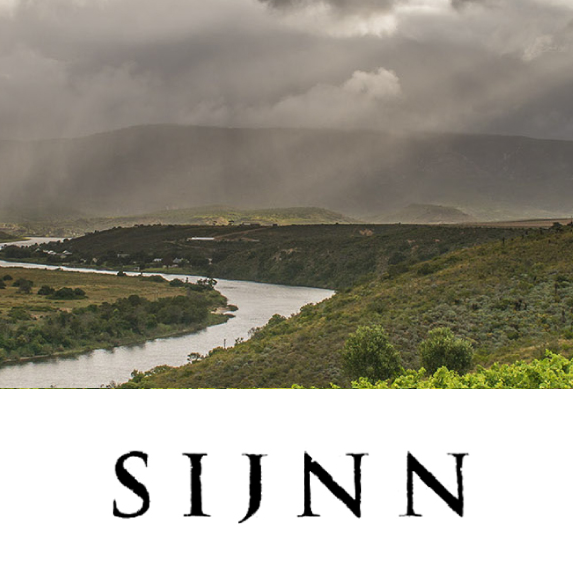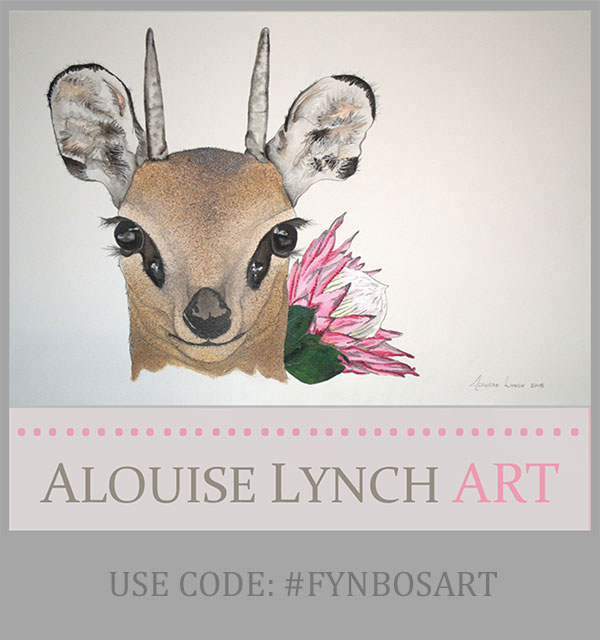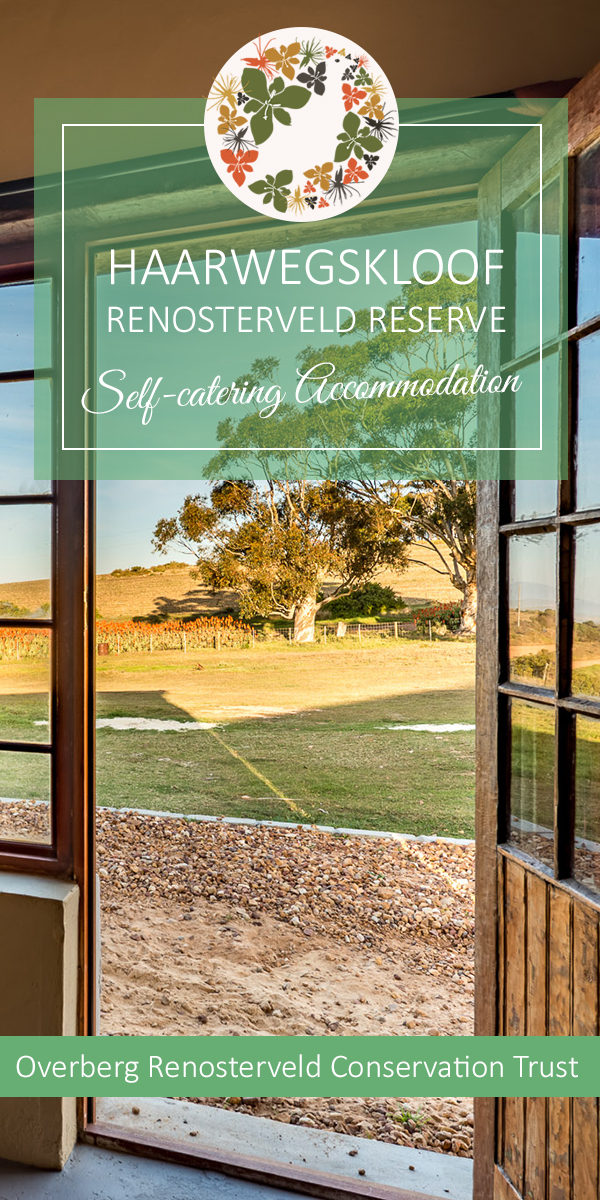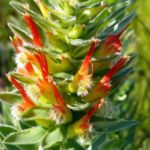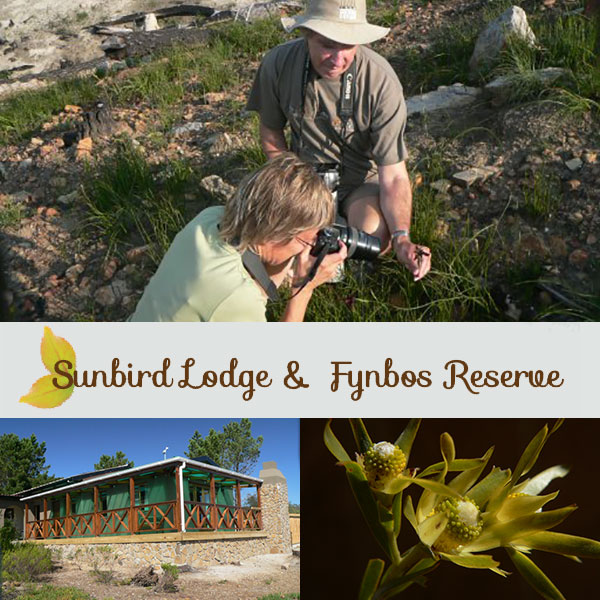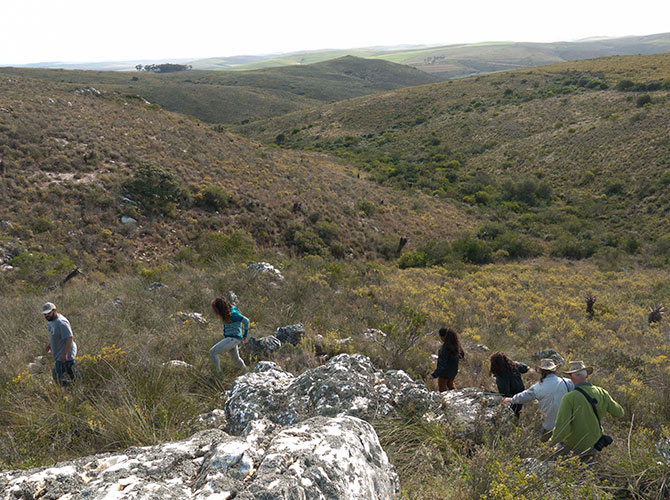
What is Renosterveld?
Previously Notes from a Cape Town Botanist introduced fynbos, the most widespread vegetation of South Africa’s Cape Floristic Region (CFR). This week I will be writing about renosterveld vegetation, the neglected and little known sister of fynbos and one of the world’s most species diverse mediterranean type shrublands.
Renosterveld is also part of South Africa’s Fynbos Biome and the CFR. However, it is notably different from fynbos vegetation in several ways. Firstly in contrast to fynbos, it occurs on relatively fertile soils, predominantly derived from shales although can also occur on silcretes and other lithologies.
Members of the three dominant plant families in fynbos, namely the Restionaceae, Proteaceae and Ericaceae are mainly absent and instead renosterveld is dominated by shrubs predominantly from the Asteraceae family as well as various C3 grasses and C4 grasses. It is also far richer in forbs and annuals than fynbos. Renosterveld is particularly known for its extraordinary diversity of geophytes, which during their spring flowering bring a profusion of colour. Many of these bulbs are local endemics.


Top: Aspalathus nigra. Above: Brunsvigia orientalis. Photo © Zoë Chapman Poulsen.
The name renosterveld is derived from the Afrikaans word ‘renoster’, meaning rhinoceros, which is thought to refer to the Black Rhino which historically occurred in the Western Cape prior to its extermination as a result of hunting by early colonists during the 18th-19th Century. This is in reference either to the predominantly grey colour of the vegetation which was thought to be similar to a rhino hide or that renosterveld was a key habitat for black rhino. We will never know for sure the exact answer.
Like fynbos, renosterveld is also a fire-dependent vegetation type, although opinions vary in the literature as to how often renosterveld should burn. There is considerable debate over whether renosterveld should be considered a ‘grassy shrubland’ or ‘shrubby grassland’ and some authors believe that renosterveld was formerly a grassland before overgrazing by the early colonists transformed it to become a shrub-dominated habitat.
It has been argued on this basis that renosterveld should be burnt at relatively short intervals of as little as 3-4 years but more recent research suggests that renosterveld has always had a significant shrub component and should therefore be managed in line with this through burning with a longer fire interval to allow shrubs to mature and set seed in between fires.

Above: Polhillia curtisiae. Photo © Zoë Chapman Poulsen.
Today all types of renosterveld are considered to be Critically Endangered and also are classed as “100% irreplaceable”. Of its former extent, only relatively small fragments remain, often areas that are too steep or rocky to be reached by the farmer’s plough. Transformation for agriculture is one of the main threats, closely followed by continuous heavy grazing and mismanagement of the veld.
In the Overberg, only 4-6% of renosterveld is left and of that even less is still ecologically intact. The majority of renosterveld in the Overberg is on private farmland, thus making it imperative to work with landowners in order to facilitate effective conservation for the future.
To this end, Dr Odette Curtis founded the Overberg Renosterveld Conservation Trust with the aim of working with farmers in the region to better conserve what little of this Critically Endangered vegetation remains. Over the last three years, amazing progress has been made. Collaborations have been built with farmers across the Overberg as well as numerous national and international conservation organisations.
A research strategy for renosterveld is ongoing in its development and a small but rapidly growing group of students are now undertaking research to better understand renosterveld ecology to facilitate implementation of best conservation practices in future. Odette has been recognised through various awards for her innovative approach to conservation and all that has been achieved by the trust in its short history.


Top: Moraea elegans. Above: Satyrium erectum. Photo © Zoë Chapman Poulsen.
However, the jewel in the crown of the Overberg Renosterveld Conservation Trust and its excellent work is the founding and development of Haarwegskloof Renosterveld Reserve and its on-site research and visitor’s centre. The reserve encompasses 500 ha of Eastern Ruens Shale Renosterveld, which forms part of one of the largest fragments in the world.
It was purchased after five years of negotiations by the World Wildlife Fund and is now managed by the Trust. Funds were raised through a highly successful crowdfunding campaign to turn the previously derelict farmhouse into what is now a cosy home from home for students undertaking research into renosterveld as well as providing affordable self-catering accommodation for visitors to the reserve and the surrounding area.
Since the launch last September, numerous visitors from the scientific community and beyond have had the privilege of visiting and staying at the heart of the reserve.The future for the renosterveld at Haarwegskloof looks bright but there is still a monumental amount of work to be done to conserve this exquisitely beautiful, species diverse and critically endangered vegetation type across the rest of the region.

Above: Watsonia aletroides flowering alongside a plethora of other geophytes in Central Ruens Shale Renosterveld in the Overberg. Photo © Zoë Chapman Poulsen.
To find out more about how you can support the vital work of the Overberg Renosterveld Conservation Trust or visit Haarwegskloof Renosterveld Reserve please check out their website for more details:
www.overbergrenosterveld.org.za
Find me on Instagram
Plant Information
Connect on Social
Connect on Facebook, Twitter and Instagram
Taking Action
There are many environmental organisations based in Cape Town and beyond that require the services of volunteers to undertake their work. So if you have a little time to spare please get involved.

